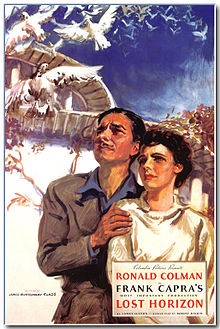Utopia is an old idea. From Plato’s Republic to Moore’s Utopia, from the Book of Revelation to Candide, authors and philosophers have long speculated on what the perfect human society might look like. Shangri La, created by James Hilton in his novel Lost Horizon, and further developed by Robert Riskin in his screenplay for the film of the same name, is a Utopia, and perhaps the one with which modern audiences are most familiar.
The two principal utopias of the 20th Century were Shangri La and Galt’s Gulch from Atlas Shrugged. Interestingly, while the former was originally created by an Englishman, it was brought to the screen by a Russian Jew who emigrated to the United States, and Galt’s Gulch was created outright by another Russian Jew, Ayn Rand. Both went to Hollywood as young people and took up screenwriting, both attained great fame. Riskin, however, came with his family, and his work always reflected a strong sense of family loyalty. Rand came alone, and her work reflects a great sense of self-reliance. Also, the Riskins fled the Tsarists, while Rand fled the Leninists. It’s not surprising, though, that two people who belonged to a persecuted minority and fled a politically unstable country should be interested in what Utopia might look like.
Continue reading
